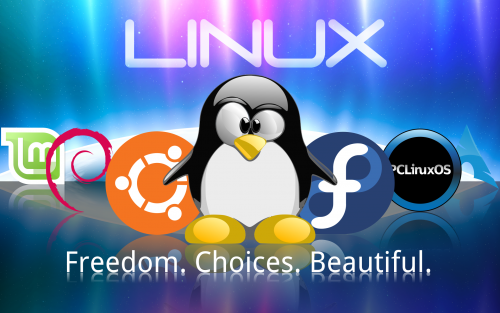Always remember that when doors close on you, other doors open. Ken Thompson and Dennis Richie are a great example for such saying. They were two of the best information technology specialists in the 20th century as they created the UNIX system which is considered one the most influential and inspirational software that ever written.
The UNIX systems beginning at Bell Labs
UNIX which was originally called UNICS (UNiplexed Information and Computing Service) has a great family and was never born by itself. The grandfather of UNIX was CTSS (Compatible Time Sharing System) and the father was the Multics (MULTiplexed Information and Computing Service) project which supports interactive timesharing for mainframe computers by huge communities of users.
UNIX was born at Bell Labs in 1969 by Ken Thompson and later Dennis Richie. These two great researchers and scientists worked on a collaborative project with General Electric and the Massachusetts Institute of Technology to create an interactive timesharing system called the Multics.
Multics was created to combine timesharing with other technological advances, allowing the users to phone the computer from remote terminals, then edit documents, read e-mail, run calculations, and so on.
Over the next five years, AT&T corporate invested millions of dollars in the Multics project. They purchased mainframe computer called GE-645 and they dedicated to the effort of the top researchers at Bell Labs such as Ken Thompson, Stuart Feldman, Dennis Ritchie, M. Douglas McIlroy, Joseph F. Ossanna, and Robert Morris. The project was too ambitious, but it fell troublingly behind the schedule. And at the end, AT&T leaders decided to leave the project.
Bell Labs managers decided to stop any further work on operating systems which made many researchers frustrated and upset. But thanks to Thompson, Richie, and some researchers who ignored their bosses’ instructions and continued working with love on their labs, UNIX was created as one the greatest operating systems of all times.
UNIX started its life on a PDP-7 minicomputer which was a testing machine for Thompson’s ideas about the operating systems design and a platform for Thompsons and Richie’s game simulation that was called Space and Travel.
“What we wanted to preserve was not just a good environment in which to do programming, but a system around which a fellowship could form. We knew from experience that the essence of communal computing, as supplied by remote-access, time-shared machines, is not just to type programs into a terminal instead of a keypunch, but to encourage close communication”. Dennis Richie Said.
UNIX was so close to be the first system under which the programmer could directly sit down at a machine and start composing programs on the fly, explore possibilities and also test while composing. All through UNIX lifetime, it has had a growing more capabilities pattern by attracting skilled volunteer effort from different programmers impatient with the other operating systems limitations.
UNIX has received its first funding for a PDP-11/20 in 1970, the UNIX operating system was then officially named and could run on the PDP-11/20. The first real job from UNIX was in 1971, it was to support word processing for the patent department at Bell Labs.
The C revolution on UNIX systems
Dennis Richie invented a higher level programming language called “C” in 1972, later he decided with Ken Thompson to rewrite the UNIX in “C” to give the system more portability options. They wrote and debugged almost 100,000 code lines that year. The migration to the “C” language resulted in highly portable software that require only a relatively small machine-dependent code to be then replaced when porting UNIX to another computing platform.
The UNIX was first formally presented to the outside world in 1973 on Operating Systems Principles, where Dennis Ritchie and Ken Thompson delivered a paper, then AT&T released Version 5 of the UNIX system and licensed it to the educational institutions, and then in 1975 they licensed Version 6 of UNIX to companies for the first time with a cost $20.000. The most widely used version of UNIX was Version 7 in 1980 where anybody could purchase a license but it was very restrictive terms in this license. The license included the source code, the machine dependents kernel which was written in PDP-11 assembly language. At all, versions of UNIX systems were determined by its user manuals editions.
The AIX System
In 1983, Microsoft had a plan to make a Xenix MS-DOS’s multiuser successor, and they created Xenix-based Altos 586 with 512 KB RAM and 10 MB hard drive by this year with cost $8,000. By 1984, 100,000 UNIX installations around the world for the System V Release 2. In 1986, 4.3BSD was released that included internet name server and the AIX system was announced by IBM with Installation base over 250,000. AIX is based on Unix System V, this system has BSD roots and is a hybrid of both.
AIX was the first operating system that introduced a journaled file system (JFS) and an integrated Logical Volume Manager (LVM). IBM ported AIX to its RS/6000 platform by 1989. The Version 5L was a breakthrough release that was introduced in 2001 to provide Linux affinity and logical partitioning with the Power4 servers.
AIX introduced virtualization by 2004 in AIX 5.3 with Advanced Power Virtualization (APV) which offered Symmetric multi-threading, micro-partitioning, and shared processor pools.
In 2007, IBM started to enhance its virtualization product, by coinciding with the AIX 6.1 release and the architecture of Power6. They also rebranded Advanced Power Virtualization to PowerVM.
The enhancements included form of workload partitioning that was called WPARs, that are similar to Solaris zones/Containers, but with much better functionality.
The HP-UX System
The Hewlett-Packard’s UNIX (HP-UX) was based originally on System V release 3. The system initially ran exclusively on the PA-RISC HP 9000 platform. The Version 1 of HP-UX was released in 1984.
The Version 9, introduced SAM, its character-based graphical user interface (GUI), from which one can administrate the system. The Version 10, was introduced in 1995, and brought some changes in the layout of the system file and directory structure, which made it similar to AT&T SVR4.
The Version 11 was introduced in 1997. It was HP’s first release to support 64-bit addressing. But in 2000, this release was rebranded to 11i, as HP introduced operating environments and bundled groups of layered applications for specific Information Technology purposes.
In 2001, The Version 11.20 was introduced with support for Itanium systems. The HP-UX was the first UNIX that used ACLs (Access Control Lists) for file permissions and it was also one of the first that introduced built-in support for Logical Volume Manager.
Nowadays, HP-UX uses Veritas as primary file system due to partnership between Veritas and HP.
The HP-UX is up to release 11iv3, update 4.
The Solaris System
The Sun’s UNIX version, Solaris, was the successor of SunOS, which was founded in 1992. SunOS was originally based on the BSD (Berkeley Software Distribution) flavor of UNIX but SunOS versions 5.0 and later were based on Unix System V Release 4 which was rebranded as Solaris.
SunOS version 1.0 was introduced with support for Sun-1 and Sun-2 systems in 1983. Version 2.0 was introduced later in 1985. In 1987, Sun and AT&T announced that they would collaborate on a project to merge System V and BSD into only one release, based on SVR4.
The Solaris 2.4 was first Sparc/x86 release by Sun. The last release of the SunOS was version 4.1.4 announced in November 1994. The Solaris 7 was the first 64-bit Ultra Sparc release and it added native support for file system metadata logging.
Solaris 9 was introduced in 2002, with support for Linux capabilities and Solaris Volume Manager. Then, Solaris 10 was introduced in 2005, and has number of innovations, such as support for its Solaris Containers, new ZFS file system, and Logical Domains.
The Solaris system is presently up to version 10 as the latest update was released in 2008.
Linux
By 1991 there were growing requirements for a free commercial alternative. Therefore Linus Torvalds set out to create new free operating system kernel that eventually became Linux. Linux started with a small number of “C” files and under a license which prohibited commercial distribution. Linux is a UNIX-like system and is different than UNIX.
Version 3.18 was introduced in 2015 under a GNU Public License. IBM said that more than 18 million lines of code are Open Source and available to developers.
The GNU Public License becomes the most widely available free software license which you can find nowadays. In accordance with the Open Source principles, this license permits individuals and organizations the freedom to distribute, run, share by copying, study, and also modify the code of the software.
UNIX vs. Linux: Technical Overview
- Linux can encourage more diversity, and Linux developers come from wider range of backgrounds with different experiences and opinions.
- Linux can run on wider range of platforms and also types of architecture than UNIX.
- Developers of UNIX commercial editions have a specific target platform and audience in mind for their operating system.
- Linux is more secure than UNIX as it is less affected by virus threats or malware attacks. Linux has had about 60-100 viruses to date, but at the same time none of them are currently spreading. On the other hand, UNIX has had 85-120 viruses but some of them are still spreading.
- With commands of UNIX, tools and elements are rarely changed, and even some interfaces and command lines arguments still remain in later versions of UNIX.
- Some Linux development projects get funded on a voluntary basis such as Debian. The other projects maintain a community version of commercial Linux distributions such as SUSE with openSUSE and Red Hat with Fedora.
- Traditional UNIX is about scale up, but on the other hand Linux is about scale out.





